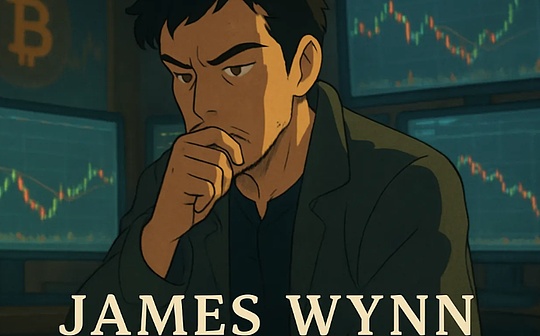EMC Labs May Report: BTC hits record highs, waiting for rate cuts and another step forward

Reprinted from chaincatcher
06/03/2025·15DAuthor: 0xWeilan
The information, opinions and judgments mentioned in this report, such as market, projects, currencies, etc. are for reference only and do not constitute any investment advice.
The strong trend of the risk equity market has surprised Wall Street hedge funds and made everyone wonder what implicit information they have missed.
Following the April rebound, the three major U.S. stock indexes continued to rise strongly, while BTC hit a record high.
Behind this, although the "reciprocal tariff war" has eased, no breakthrough has been made in reaching an agreement, and the "Russia-Ukraine War" is still in a stalemate between negotiations and offenses.
But capital inflows surged, and BTC Spot ETF channels flowed more than 2.7 billion. Long-term hand positions approach high, exchange positions continue to decline, and BTC supply and demand are very strong.
In terms of policy, the US state-level BTC reserve bill has also achieved a historic breakthrough. The GENIUS ACT, which is related to stablecoins, also passed the Senate vote.
US economic employment data is strong, inflation continues to decline, and GDP expectations begin to rise. This may be the fundamental reason for the market's strength. However, the tariff war has not ended, and the US debt panic caused by the "Beautiful Plan" has not disappeared. The trend of US stocks and BTC this month has included the most optimistic estimates. The market in the future may eliminate uncertainty with fluctuations and wait for the third quarter rate cuts to arrive.
**Macro Finance: "Relativity" shock is giving rise to a "moderate
recession" of the US economy**
In the April report , we pointed out that "the most painful moment has passed. When Washington and the Federal Reserve return to a rational game state, the market should be able to return to its own operating laws." Facts show that global geopolitical game and the American democratic system defeated the ambition of "crazy king" Trump, market expectations eventually returned to rationality, ushered in a continuous rebound, and made the most optimistic pricing.
The successive three kills of "stock, bonds and foreign exchange" triggered violent shocks in the US financial market. In addition to strong opposition from the business community, Trump was forced to make concessions. The "reciprocal tariff war" he initiated quickly entered the second phase of "negotiation" in May and began to enter the third phase, taking the lead in reaching a tariff agreement with the UK.
In early May, the United States and China held the first round of trade negotiations in Switzerland, pressing the pause for the fierce tariff war between the two countries for more than a month. The two sides issued a joint statement on May 12 (East US), promising to reduce the high tariffs previously imposed on each other in the next 90 days, and said they would continue to negotiate on economic and trade relations. The S&P 500 jumped 3.26% on the same day.
In early April, as Trump "softened", the US stock market launched a major counterattack, and the decline since the basic tariff war in April was lost. In May, with the formal contact between the United States and China, the stagnant US stocks were once again helped and continued to rise. As of the 31st, the Nasdaq, S&P 500 and Dow Jones recorded monthly gains of 9.56%, 6.15% and 3.94% respectively.
The rebound of US stocks in April, which we will see as a reflection of the end of panic selling and Trump's softening, is a rapid pricing after the first phase of the "peer-to-peer tariff war". The rise in May means optimistic pricing for the second phase of the "peer-to-peer tariff war" (negotiation). Just as the current public information is concerned, this price is sufficient and optimistic. Before we get new progress in the tariff war, the Federal Reserve's interest rate cuts and further progress in the "Russia-Ukraine War", we believe that it is less cautious to continue to price significantly upward.
Pricing in May already covers the relatively “strong” performance of the fundamentals of the U.S. economy and employment.
Economic data released at the end of May showed that the U.S. economy shrank by 0.2% on an annualized basis in the first quarter. This data is slightly higher than the previously announced initial value (declining by 0.3%), but it still shows that the US economy has suffered some damage from the first day of the Chinese New Year.
GDP soft data has recorded a rebound after experiencing underestimation over the past few months. GDP Now data released by the Atlanta Federal Reserve Bank shows that the data has returned to the zero axis since the end of April, reaching 3.8% by the end of May, showing optimism after the slowdown in the tariff war.

GDP Now Data
The PCE data that the Federal Reserve is most concerned about in May showed that inflation continued to slow down, the annual PCE rate fell to a low of 2.15% in March, and the core PCE fell to 2.52%, a new low since the epidemic and is gradually approaching the 2% expected by the Federal Reserve to raise interest rates.

US PCE data
Employment data exceeded market expectations. In early May, the U.S. Bureau of Labor Statistics announced that the number of non-farm employment increased by 177,000 in April 2024, higher than market expectations of 138,000. As of the week ending May 24, 2025, the number of people applying for unemployment benefits for the first time was 240,000, an increase of 14,000 from the previous week (226,000 after the revised), higher than the market expectations of 230,000. The strong performance of employment data has eliminated market doubts about the US recession on the one hand, and has also made the Federal Reserve focus on its goal of "reducing inflation."
This month, the Federal Reserve's interest rate meeting decided to stop staking interest rates for three consecutive months. Although the Federal Reserve released certain "dove" remarks to the market during the "three kills of stocks, bonds and foreign exchanges", after the financial market stabilized, it continued to hold on with the huge pressure from President Trump, and emphasized that the uncertainty caused by tariffs may lead to a rebound in inflation data.
The strong performance of the financial market, coupled with the "peer-to-peer tariff" war, is still not over, and inflation may rebound, which makes the market judge that the Federal Reserve will not restart interest rate cuts in the first half of the year. The latest data from CME FedWatch shows that traders will only cut interest rates twice this year, in September and December, each at 25 basis points. This expectation has actually "curbed" the room for a sharp rise in U.S. stocks and crypto assets driven by liquidity.
Based on the current data and situation judgment, we expect that US stocks and BTC will likely remain fluctuating in the next two months, and the expectation of interest rate cuts in August may not push US stocks and BTC to record highs. This judgment includes the optimistic ending of the "peer-to-peer tariff war" and the relatively "moderate" recession of the US economy.
The US GDP recorded a recession record of -0.21% in Q1, while the decline in consumer confidence and market chaos caused by the "peer-to-peer tariff war" in Q2 will meet the standard of a "moderate recession" if it triggers a slight decline in Q2 GDP. Therefore, the launch of interest rate cuts in September may be a more cautious expectation.
Crypto Assets: Strong capital inflows drive BTC to hit record highs
In May, BTC opened at $94,182.55 and closed at $104,645.87, up $10,463.33 for the whole month, 11.11%, with an amplitude of 19.79%, and trading volume fell for two consecutive months.

BTC price monthly line
Judging from the technical indicators we continue to pay attention to, BTC prices hit a record high of $112,000 after returning to the "Trump bottom" ($90,000 to $110,000) in April, and jumped above the "first bull market upward trend line".
In a high interest rate environment, retail investors have not formed real decisive buying power. In fact, since March last year, the daily new BTC address has fallen to the low level.

New BTC address (Day)
In the bottoming rebound since April, the decisive force comes from institutions.

Strategy Company Position Statistics
Based on the announcement data of Strategy, which is included in the Nasdaq 100, it has increased its holdings by 133,850 since 2025, and its total holdings have reached 580,250.
Since January 2024, 11 BTC Spot ETFs have been approved. In May 2024, the U.S. House of Representatives passed the Financial Innovation and Technology Act (FIT21), and crypto assets and blockchain technology have gradually been established by the United States as key development areas. Since then, the adoption of crypto assets represented by BTC has been further mainstreamed in the United States.
In March 2025, the United States trusted President Trump signed an executive order to establish a "Strategic Bitcoin Reserve" and use the government's approximately 200,000 Bitcoins held by the government as national reserve assets.
After that, more than 20 states in the United States began to propose state-level Bitcoin reserve bills. This demand also made a breakthrough in May. On May 7, the governor of New Hampshire signed a bill, becoming the first state in the United States to officially include cryptocurrencies in its strategic reserves. The bill allows state finance ministers to invest up to 5% of state government funds in cryptocurrencies. The relevant Bitcoin reserve bills in Texas and Arizona have also been voted by the Senate to submit them to the governors of the two states to wait for signing and taking effect.
At the blockchain and Web3 level, the GENIUS ACT, which regulates the development of stablecoins on May 19, passed a procedural vote in the Senate with 66 votes in favor and 32 votes against, paving the way for the final signing of the bill. In the same month, the Hong Kong Legislative Council officially passed the draft bill on the 21st to establish a licensing system for the issuer of legislative currency stablecoin.
Several large U.S. banks are discussing cooperation in launching joint stablecoins. Currently, it involves JPMorgan Chase, Bank of America, Citigroup, Wells Fargo, etc.
The stablecoins with an issuance scale of more than US$240 billion will enter the era of compliance development. In addition to BTC, stablecoins are likely to become the second widely adopted crypto asset, and are likely to become the first killer application in the Web3 field to exceed 1 billion users. This has laid a use case basis for the booming development of blockchain, especially smart contract platforms.
After being included in the compliance system, BTC and blockchain are becoming a technological highland that the United States must occupy. Investment and speculation caused by this trend are spreading. In addition to Strategy, many companies around the world, including the Trump Media Group, are launching plans to hoard BTC and other crypto assets (such as ETH and SOL).
The expansion of use cases and the FOMO sentiment and purchasing power stimulated by compliance breakthroughs have become the basic driving force for the rise in prices of BTC and other crypto assets.
Funds: optimistic pricing + use case expansion
During the US stock market plunge in March and April, the inflow of BTC Spot ETF came to an abrupt end, triggering BTC to adjust more than 30% with US stocks (the biggest pullback this cycle). Since April and May, with the strong rebound of US stocks, the buying power of BTC Spot ETF has also recovered strongly, inflowing US$605 and US$2.775 billion, respectively, pushing BTC to recover all losses and set a record high of US$112,000.

Capital Flow (month)
Stablecoins (not all used for Crypto trading) have also been amplified, with inflows of US$5.375 and US$5.567 billion respectively in April and May, but the funds in the intersecting BTC Spot ETF channel have little changes.
We previously pointed out that BTC pricing power has been controlled by on-site funds by BTC Spot ETF channel funds and Strategy-like institutions. Such institutions have long-term subjective long-term attributes, and the reason behind this is that BTC and Crypto assets continue to make breakthrough progress at the US policy level. This is not only the reason why BTC was able to rebound rapidly in April and May and surpass the Nasdaq to hit a record high, but also the underlying logic support that can be optimistic about in the future market in the long term.
But it should be noted that the US stock market has made extremely optimistic pricing for the tariff war, and may imply the premise that the US economy will not experience a sharp recession. At present, it is difficult for the United States to break through the new high, and fluctuations are inevitable. Although institutions such as Strategy are continuing to flow in, and BTC Spot ETFs are difficult to get out of the independent market that distinguishes the Nasdaq, it is too optimistic to expect BTC to break a new high in the medium and short term.
Chip structure: exchange BTC stock continues to decline
During the decline from March to April, long-term BTC investors once again started to increase their holdings, objectively playing a balancer for reducing market selling pressure.

Long and short handheld position structure (month)
By the end of May, the scale of long-term holdings reached 14.4199 million at a historical high, and the stock scale of corresponding centralized exchanges was in a continuous decline. Currently, only 2.9882 million remained, close to the level at the end of November 2020.
In previous cycles, when liquidity surged, long-term selling objectively curbed price increases, but the price decline during the cycle will slow down the selling or even turn to increase holdings, and this cycle is no exception.
The difference from the previous cycle is that the "secondary selling" of long hands will end the bull market in the past, and after this round of "secondary selling", the market chose to continue to rise. We understand it as the addition of Strategy-like institutions to the long hands structure, which triggers changes in market trends. Whether this change is permanent or temporary needs to be paid close attention.
Conclusion
Although we have a long-term optimistic attitude towards the expansion of BTC's use case and long-term trends, the strong price and sharp trends in the short term are still beyond our most optimistic estimates.
The reason is the overly optimistic risk markets, including U.S. stocks, and the investment and speculation boom caused by BTC's huge use case expansion in the United States. We are confident in the latter, but we think the pricing of the "peer-to-peer tariff war" in the US stock market and BTC market is too optimistic, and there are still many twists and turns in the middle. In addition, we lowered our expectations for the Fed to withdraw interest rates.
In the March report, we expect BTC to reversal in the summer, but the market response exceeded expectations and set a new high in May. Taking into account many uncertainties and delayed liquidity expectations, we believe that BTC will likely fluctuate with US stocks in the following two months, and hit a new high and then reach a new price level, which is a low-probability event.
If everything goes well, it should be the story of the third quarter!
EMC Labs (Emergency Labs) was founded in April 2023 by crypto asset investors and data scientists. Focusing on blockchain industry research and Crypto secondary market investment, taking industry forward-looking, insight and data mining as its core competitiveness, we are committed to participating in the booming blockchain industry through research and investment, and promoting blockchain and crypto assets to bring welfare to mankind.



 jinse
jinse
